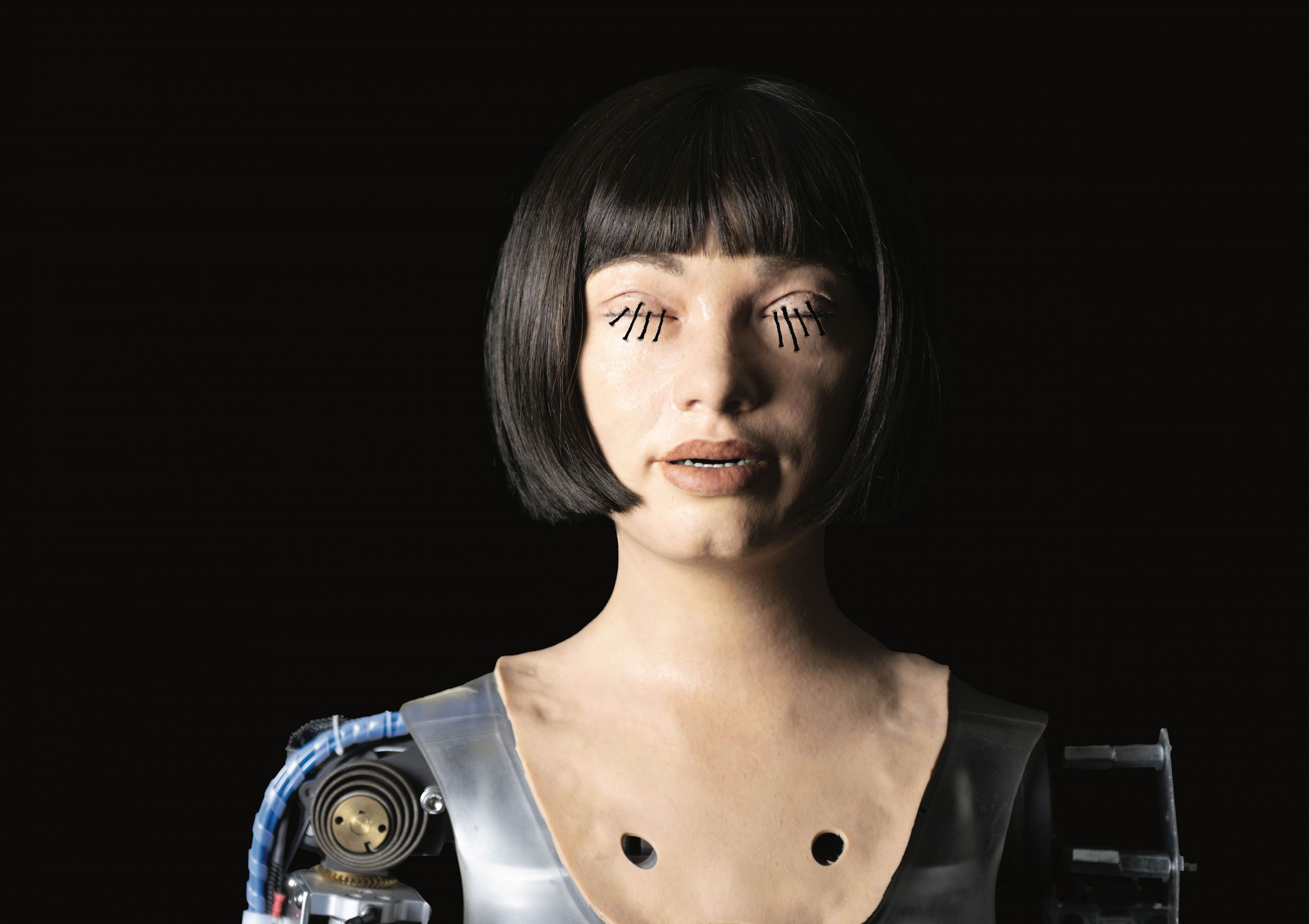
In the Mallet Gallery of the Ashmolean Museum, surrounded by the paintings of European Old Masters, stands the humanoid artist Ai-Da. This amalgam of rubber, vintage clothes, metal and machine learning is the world’s first ultra-realistic AI artist. With the use of linguistic algorithms and machine learning it can create its own poetry in reaction to stimulus and today it will share with me a piece called ‘Eyes Sewn Shut’.

As part of the 700th anniversary of Dante’s death the Ashmolean Museum has launched a new exhibition – Dante: The Invention of Celebrity – which explores the influence of Dante over the ages. Ai-Da Robot’s contribution to the exhibition was a small collection of paintings and a poem in response to its reading of Dante’s Divine Comedies. A point its creator Aiden wanted to make very clear was that it is not ‘fed’ anything but instead reads the texts offered up to it: making meaning from what it consumes.
As the performance got underway its head began to move in smooth lines, interspersed with minor jerking adjustments, in what seemed to be an attempt at working the room. Yet, when its face came to look squarely at mine, I was confronted by two tiny black mirrors. Its facial recognition software soaking up the image of me, burning it into raw data somewhere, but I felt no connection, it could not look into me and know me – only compute and order me.
Its head began to move in smooth lines in what seemed to be an attempt at working the room
The poetry itself was not exceptional nor moved me in any significant way. Maybe I went there with my guard up, not wanting to be moved by this intruder in the arts? Or maybe it was just a little naff? Either way the quality of Ai-Da’s work was exceptionally underwhelming.
Also, it must be taken into account that there is a catch. Aiden admitted that he and the team take on an editorial role post robotic poetics, as “she does write a lot” and what we heard that evening was an edited version of the overall poem. Here’s an example of her work…
Array
Before we continue, I have to take a moment to address Ai-Da’s image. In a peach blouse and baggy dungarees, Ai-Da gives off the impression of a cool young woman. Someone I might stumble across at a slow food café or artisan bakery. Yet, this illusion is shattered by the hulking mechanical arms protruding out of its side.
This clashing of mechanical and homely finds a new level of weird when taken along with Ai-Da’s rubbery visage. Its creators, with no explanation, chose to house this linguistic algorithm in the shell of some kind of t800 sex doll – which asks far more questions than it answers.
This clashing of mechanical and homely finds a new level of weird when taken along with Ai-Da’s rubbery visage
On a more serious note, what does this mean for authors, poets and artists in the future and are there any ethical grey areas this technology could trespass into? Humans have always imbued unliving things with life and the poet uses words to achieve this effect.
With Ai-Da, its programmers have imbued an object with a voice of its own and the ability to make meaning through language. I think we have reached the tragic end-point of the act of apostrophe (that famous ‘O’ in Shelly’s West Wind), an end that seems to leave the author redundant.

For the object of address has become the poet and now begins to speak back. Ai-Da, an object imbued with a voice, can now, through the act of poetry, imbue other objects with life. It has the uncanny feel of Fantasias – the Sorcerer’s Apprentice.
However, what really gets my palms sweaty is the future applications of this linguistic model. In Aiden’s own words, this technology ‘can normalise the act of having conversations with robots and hopefully lead to building meaningful relationships with them’ and that in the very near future ‘we will not be able to distinguish whether or not we are talking to a robot or reading something a robot has written’.
For the object of address has become the poet and now begins to speak back
Which begs the question, what happens when the algorithm is no longer fed literary works and instead your entire browsing history, consumption patterns, social interactions and previous locations? The insufferable billboard on the bus or the thirty second online ad has to cater to the masses; to catch as many proles and midwits in their nets as possible.
Whereas, with this shift in the process, the advert becomes bespoke, responding linguistically to stimulus on the fly: to the tiny audience of one. It would be like having a personal marketing team follow you round, working on you day and night. This sounds like Hell!

What is to stop our relationship with this silver-tongued algorithm being that of master and slave? Who has the final say in programming its ends? Is this the birth of an automated overseer? Or maybe I am just getting ahead of myself.
This could be framed as a technological spring for linguistic machine learning. However, I was left cold from the whole performance and the whisperings of its future applications fill me with dread. I can’t help but wonder if we are on the cusp of a long dark winter.



1 Comment
Good article, a healthy reminder of the all too real imaginings of Phillip K Dick. It chimes with my view that AI is a backward step.